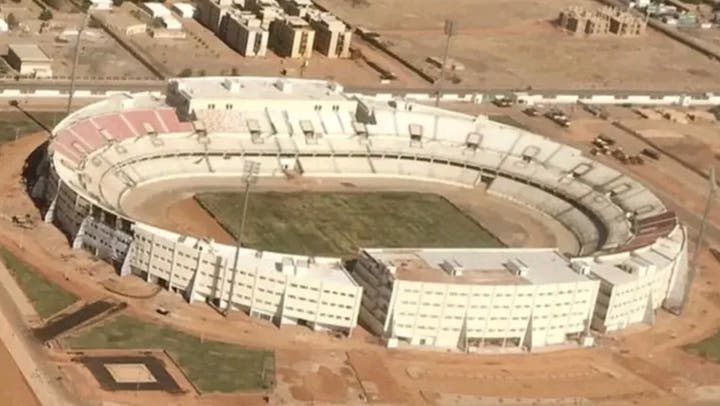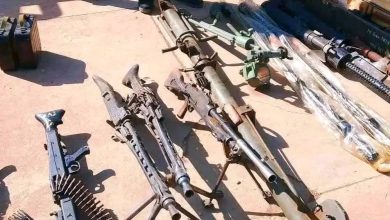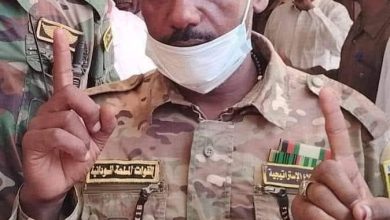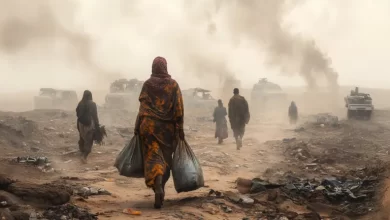“Sports City” in Khartoum: From a Sporting Dream to a Bloody Nightmare

Report by: Khalid Fathi
On a tense morning before the storm, Sudan’s capital Khartoum witnessed an unprecedented event. The sound of gunfire echoed from within the “Sports City” complex—a facility built to symbolize sporting excellence—signaling the start of one of the most violent battles in Sudan’s modern history. Those first bullets fired in the heart of Khartoum marked the eruption of war, turning the dream of Sports City into a bloody nightmare.
But gunfire wasn’t the first disaster to strike the project. It was preceded by systematic corruption that drained public funds and left behind an incomplete facility—eventually repurposed as a military base and a launching point for war. The anthem of destruction replaced the national anthem once intended to be played there.
Wasted Funds and Fake Contracts
For decades, the “Sports City” project remained a symbol of ambition and a recurring political promise. The millions spent to build the country’s largest sports complex vanished into unfulfilled contracts and abandoned structures. Not a single match was played, no fans cheered from the stands—only RSF (Rapid Support Forces) fighters infiltrated the heart of the project and used it as a strategic base during the conflict.
Corruption and Land Encroachments
Corruption and encroachments took many forms at “Sports City,” starting with the allocation of vast plots of land to influential individuals and institutions without oversight or accountability. One of the biggest scandals occurred when a former official sold part of the land for private commercial projects, shrinking the space meant for sports facilities.
Leaked documents revealed that some former ministers and prominent figures seized large portions of adjacent land for personal or residential use. Strategic plots near the project were distributed to select individuals, while the original site plan was neglected.
In terms of construction, investigations found that the contracting companies assigned to build the facilities failed to meet deadlines or adhere to engineering standards, resulting in the collapse of major parts of the complex. Moreover, the contracts with private firms were plagued with corruption, with large budgets approved without effective monitoring.
A Shocking Shift from Sports to Gunfire
As clashes erupted in Khartoum, “Sports City” quickly became a military hotspot. Snipers perched on rooftops, armored vehicles filled the grounds, and explosions rocked nearby neighborhoods. A woman from Al-Azhari district told Al-Arabiya.net:
“We were preparing for Eid when gunfire erupted suddenly… people ran, and the sky lit up with fire. We didn’t know where to go… we just ran in chaos.”
She added: “My nephew had gone to the market ahead of us, and we couldn’t find him among the fleeing crowds. At that moment, we realized the war had begun, and that nothing would ever be the same.”
The War Returns to Its Starting Point
Nearly two years after the war began, “Sports City” returned to the spotlight. In late March, the Sudanese army regained control of the complex and surrounding areas—a symbolic moment, as fighting returned to the very place where the first bullet in Khartoum was fired. But the site was no longer the same: a devastated zone scarred by bullet holes, with shattered dreams of generations who once hoped for a future free from fear and violence.
The Dream’s Beginning… and Its End
The idea for the project dates back to the 1960s, but actual construction began under the Bashir government in the 1990s, when a million square meters were allocated to “Sports City.” However, encroachments, frequent changes in leadership, and the political exploitation of the project turned the dream into silent concrete.
Sports journalist Badr Al-Din Al-Basha told Al-Arabiya.net:
“The project was continuously violated. Portions were taken for the benefit of institutions and powerful individuals, including former ministers who obtained nearby residential lands, while government bodies manipulated the land for commercial ventures.”
Sales, Leases… Then Militarization
In a striking irony, a former minister ordered the sale of parts of the project’s land for the construction of a bridge. Just a month before the war, Youth and Sports Minister Hazar Abdel Rasoul signed a lease agreement with the RSF, turning the site into a weapons depot and operations center.
Al-Basha stated: “This was one of the greatest disasters to befall the project—it transformed a strategic sports location into a battleground, putting civilian lives at grave risk.”
Systemic Corruption and Political Obstacles
Al-Basha added:
“Despite limited efforts to reclaim seized lands—most notably under Minister Hassan Othman Rizk—no reforms were completed due to political and administrative barriers. Even when construction reached the point of building an Olympic track and swimming pool, the remaining space couldn’t accommodate the full project as promised.”
A Secret Box Waiting to Be Opened
Today, “Sports City” stands as a witness to two crimes: administrative and financial corruption that wasted millions of dollars, and its transformation into a military stronghold. But it’s not just a collection of abandoned buildings—it’s a black box hiding names, details, and deals that, if exposed, could shake the foundations of an entire system.
Will these files be opened? Or will they remain buried like the dreams that were laid to rest in the heart of Khartoum?
The Sudanese people await an answer—but in a country where projects are killed before they’re born, the truth remains postponed, indefinitely.
Source: Al Arabiya Net



